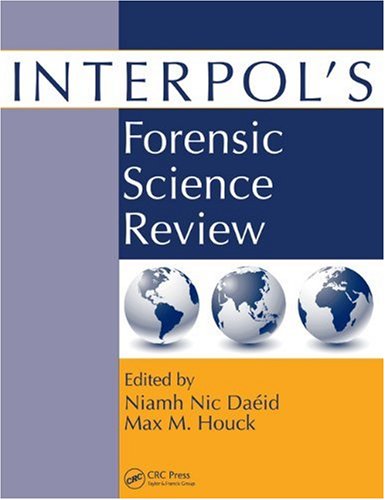(Ebook) Interpol's Forensic Science Review by Niamh Nic Daeid, Max Houck ISBN 9781439826584, 1439826587
Every three years, worldwide forensics experts gather at the Interpol Forensic Science Symposium to exchange ideas and discuss scientific advances in the field of forensic science and criminal justice. Drawn from contributions made at the latest gathering in Lyon, France, Interpol’s Forensic Science Review is a one-source reference providing a comprehensive literature review of each of the subject areas.Divided into five sections spanning the spectrum of forensic analysis, the book begins with chemical criminalistics, starting with a chapter on the forensic examination of fibres. Next, it examines firearms and ballistics, toolmarks, footwear impressions, and other contact marks such as tire treads. A chapter on forensic geology includes related sciences such as palynology. The first section concludes with a review of articles concerning paint and glass and methods for analysis of these substances.The second section focuses on drugs and toxicology. It examines improvements in the detection and analysis of abused substances, highlighting tests that are faster, more discriminatory, more sensitive, and less costly, providing hundreds of references to various studies conducted worldwide.Shifting to an exploration of electronic evidence, the next section begins with forensic audio and visual evidence and then moves to digital evidence found on computers and telecommunication and electronic multimedia devices, an area that has exploded in technological progress since the last symposium.The fourth section of the book begins with a discussion of hazardous materials, including chemical, biological, radiological, and nuclear substances. It discusses new developments in environmental forensic science, with an increased emphasis on the field work necessary in investigation as well as advice on suggested equipment and online educational resources. The section concludes with a discussion of the analysis and detection of explosives and explosive residues, as well as scientific methods applied to fire cause and fire debris analysis.Finally, the book focuses on individual identification. It examines biological evidence screening and advances in DNA profiling during the past three years and explores questioned documents with a discussion of ink analysis and handwriting. The book concludes with a survey of the literature concerning fingerprints, bitemarks, and other impressions.The international scope of contributions to this volume makes it the most comprehensive source of information in the field today. Supplemented by hundreds of references to periodicals, textbooks, internet sources, and the proceedings of various working groups, the book identifies trends and their potential effects on forensic science and creates bridges with the international forensic science community supporting Interpol’s mission.
*Free conversion of into popular formats such as PDF, DOCX, DOC, AZW, EPUB, and MOBI after payment.


